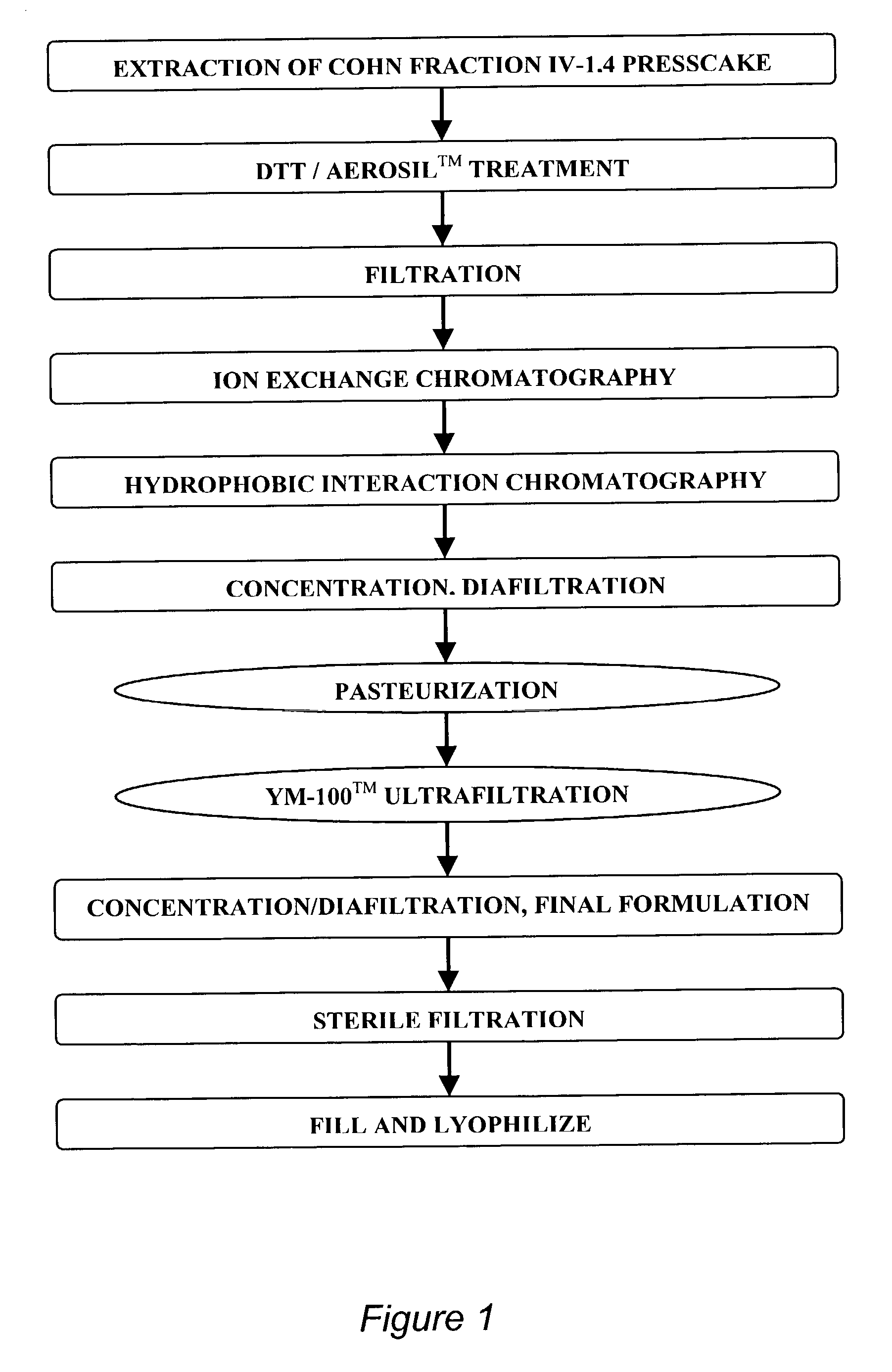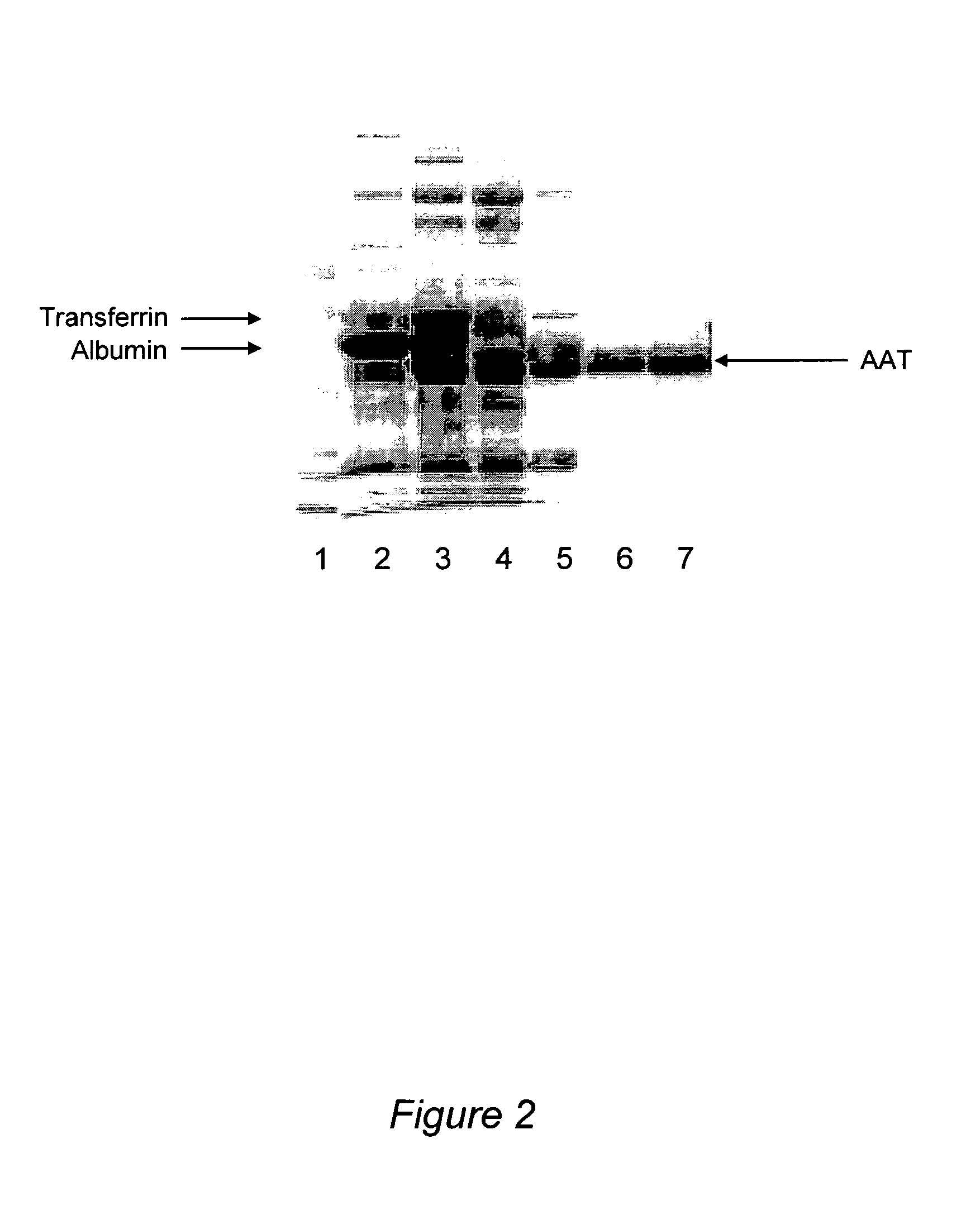Method for purification of alpha-1-antitrypsin
- Summary
- Abstract
- Description
- Claims
- Application Information
AI Technical Summary
Benefits of technology
Problems solved by technology
Method used
Image
Examples
examples
[0102]Fraction IV1-4 Precipitate (667 kg) was isolated via the Cohn plasma fractionation process from 9026 liters of human plasma. The material was divided into nine batches of approximately 75 kg each. Each batch was suspended in Tris Buffer, using 6 to 10 parts buffer (w / w) relative to the presscake. The suspensions were stirred for at least 15 minutes, the temperature was adjusted to 2°-8° C., and the pH of each suspension was adjusted to 8.80-8.95 with 1 N sodium hydroxide or 1 N hydrochloric acid as necessary. The suspensions were stirred for 15 to 105 minutes (average 45 min), and monitored for protein (Bradford assay) and potency. Specific activity of each batch ranged from 0.027 to 0.045, and averaged 0.037 mg functional AAT per mg protein. Approximately 12% of the total protein was albumin, and approximately 22% was transferrin.
[0103]Dithiothreitol (DTT) was added to a final concentration of 0.01 to 0.05 M DTT (average 0.03 M) based upon the amount of Tris Buffer in each ba...
PUM
| Property | Measurement | Unit |
|---|---|---|
| Temperature | aaaaa | aaaaa |
| Temperature | aaaaa | aaaaa |
| Temperature | aaaaa | aaaaa |
Abstract
Description
Claims
Application Information
 Login to View More
Login to View More - R&D
- Intellectual Property
- Life Sciences
- Materials
- Tech Scout
- Unparalleled Data Quality
- Higher Quality Content
- 60% Fewer Hallucinations
Browse by: Latest US Patents, China's latest patents, Technical Efficacy Thesaurus, Application Domain, Technology Topic, Popular Technical Reports.
© 2025 PatSnap. All rights reserved.Legal|Privacy policy|Modern Slavery Act Transparency Statement|Sitemap|About US| Contact US: help@patsnap.com


